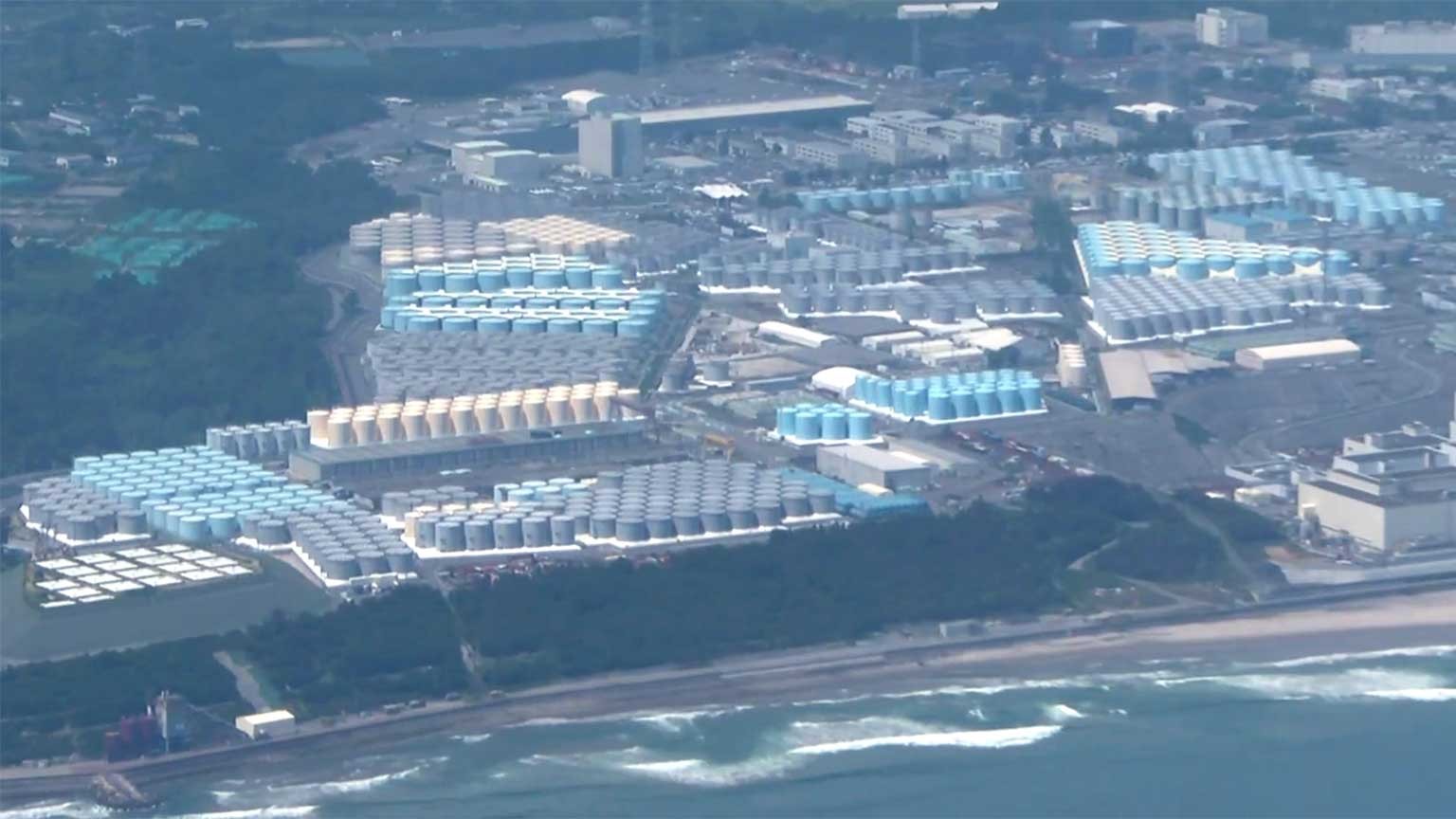The plant's operator, Tokyo Electric Power Company, has filled what is called the "discharge vertical shaft" to prepare for the release. The mixture in the shaft has been diluted with 1,200 tons of seawater for every ton of water from the plant.
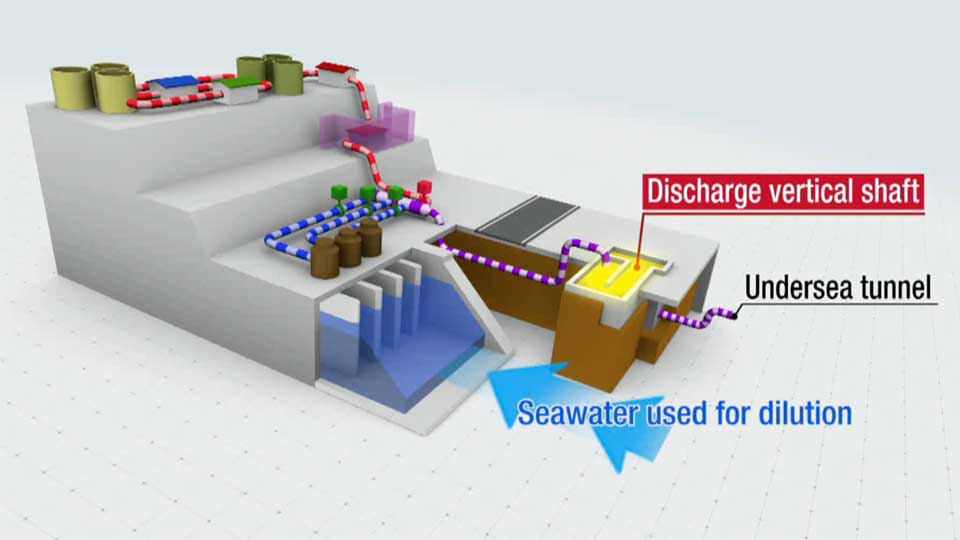
The operator is now measuring the water's tritium levels to confirm it has been sufficiently diluted.
If all proceeds as planned, TEPCO will begin discharging the water over a period of 17 days starting on Thursday, weather permitting.
Mixed reactions in Fukushima
Local voices in Fukushima reveal mixed feelings about the treated water release plan.
In front of Fukushima station on Wednesday, newspaper vendors handed an extra edition to pedestrians after Tokyo's decision to begin releasing the treated water as early as the following day.
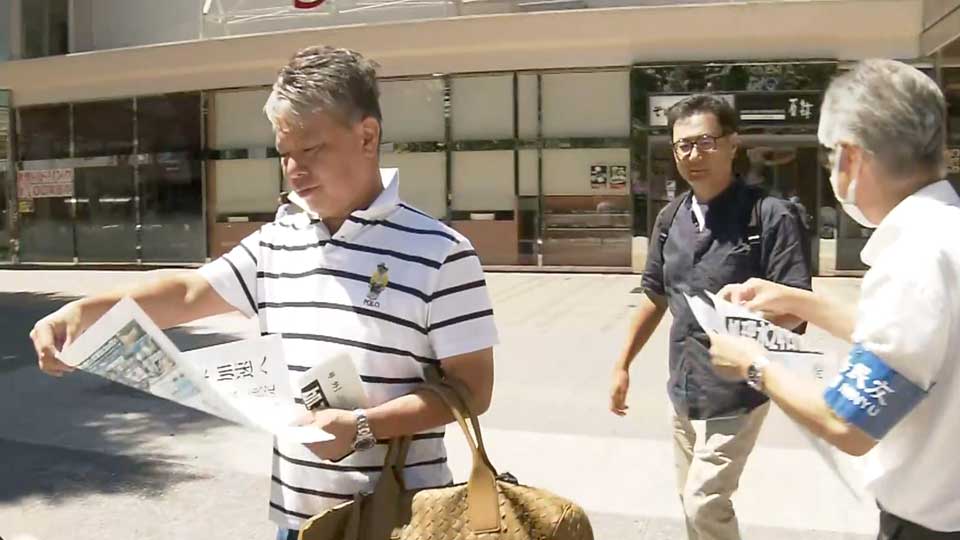
One woman said she neither agreed nor disagreed with the plan, but added that nothing can happen unless there is progress on the issue.
One man said he is worried about the impact of harmful rumors, saying reputational damage is unclear.
Another woman said that unless there is monitoring after the water release, she will not be able to feel a sense of ease.
Japan's Economy, Trade and Industry Minister Nishimura Yasutoshi visited the prefectural government on Tuesday afternoon. He spoke with Fukushima Governor Uchibori Masao, who called on Tokyo to take total responsibility for maintaining life in the region for future generations.
"In Fukushima, there are concerns that the handling of treated water will create new rumors," Uchibori said, adding that "decommissioning work must proceed safely and steadily to achieve reconstruction as soon as possible."
The governor emphasized that the treated water release plan is not only an issue for Fukushima but for all of Japan.
Fukushima fisheries unconvinced
Fisheries in Fukushima are unconvinced that the government should proceed with its plan.
Fishery operator Ishibashi Masahiro belongs to the Soma Futaba fishing cooperative, based on the coast near the area where the Fukushima Daiichi nuclear plant is located. He said he was disappointed to hear the news of the release schedule at his home.
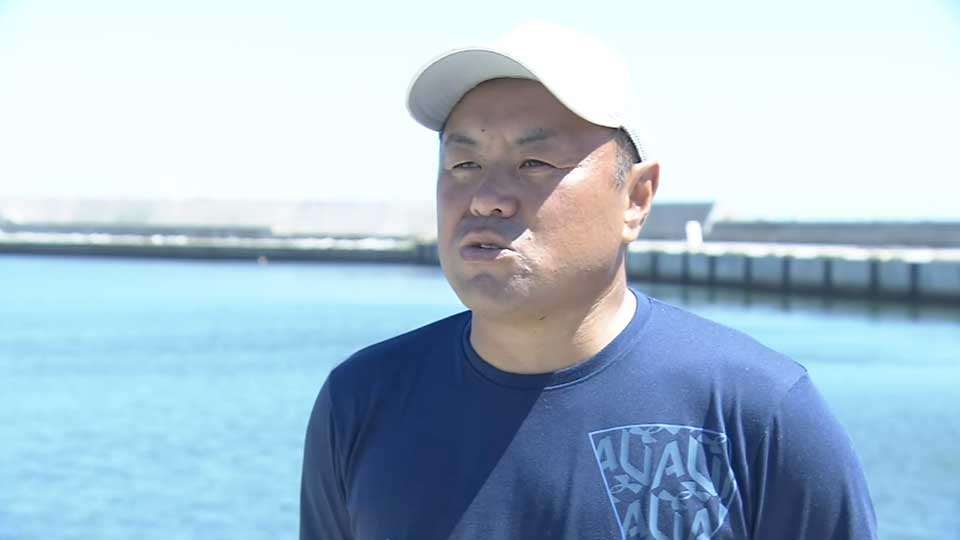
Ishibashi used to catch flounder and sea bass before the 2011 disaster, but he has suffered from both fishing restrictions and reputational damage caused by rumors.
In order to revive the local industry, he has traveled outside the prefecture to appeal to consumers and convince them of the safety of fish from Fukushima.
Ishibashi said it was difficult for him to understand why the government had decided to release the water without gaining the fisheries' understanding, and that he cannot accept the decision.
Suzuki Kouji, a wholesaler in Fukushima's Iwaki City, handles fish from local fishing ports and sells them to stores and restaurants in the prefecture.
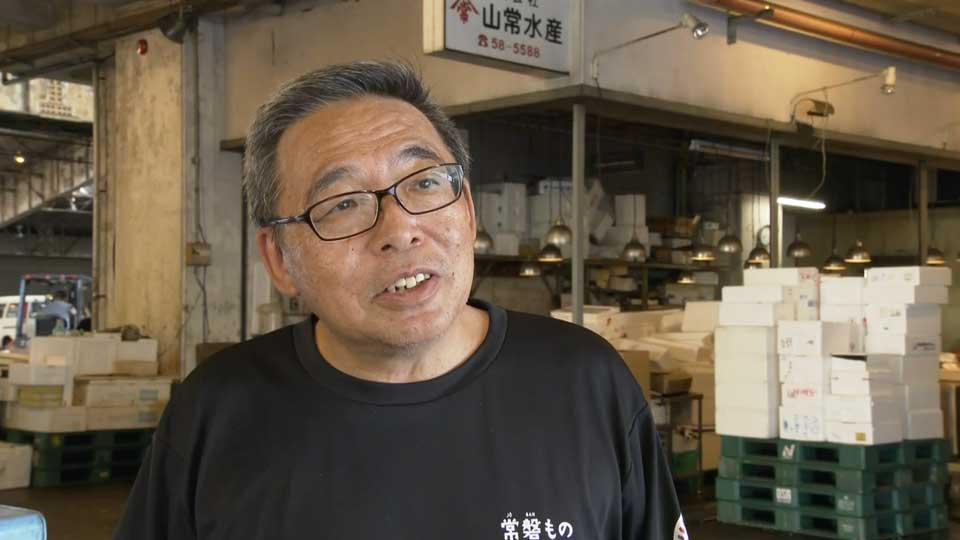
After the disaster, Suzuki worked with other vendors to promote fish caught off the coast of Fukushima.
In late June, he invited government officials to a study session about the water release plan, and has been making efforts to learn more about it.
"My first impression is that the time has finally come, which is regrettable," Suzuki said.
He said he has mixed feelings about the plan, as he understands that the water release is necessary in order to proceed with the nuclear power plant's decommissioning work.
Reactions from Asian neighbors
Japan's Asian neighbors have raised questions about its water release plan, with some stating their opposition.
China's state-run media broke the news of Tokyo's decision around 10:30 a.m. on Tuesday.
China's Vice Foreign Minister Sun Weidong lodged a protest with Japanese ambassador Tarumi Hideo, and called the move "selfish and irresponsible."
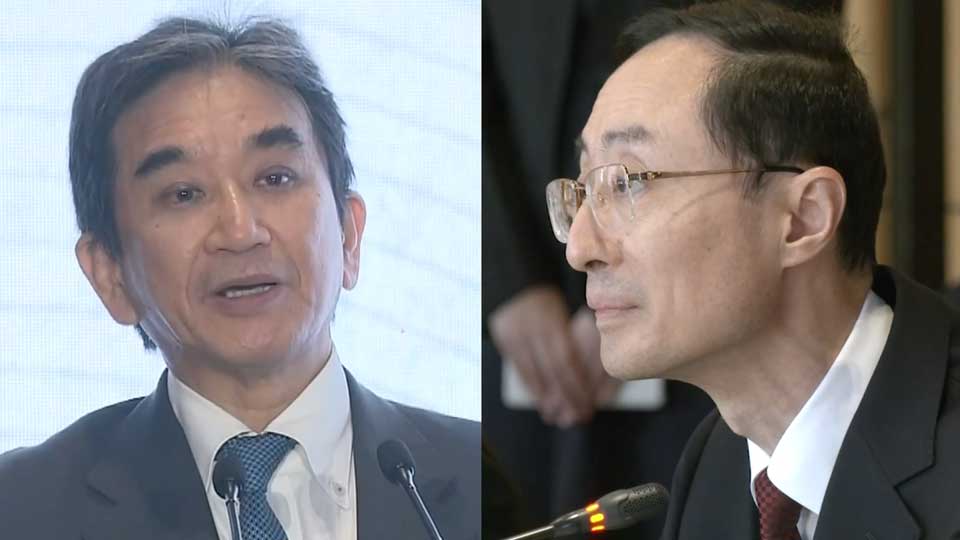
According to the Japanese Embassy in Beijing, Tarumi said Japan has "continued to sincerely and carefully explain its decision to release the treated water, and has been very transparent about the scientific justification for the decision." He also said it is "regrettable that China is making claims that are not based on scientific evidence."
Hong Kong's reaction was firm and swift. Its Secretary for Environment and Ecology announced a ban on seafood imports from ten Japanese prefectures, including Fukushima and Tokyo, beginning on Thursday.
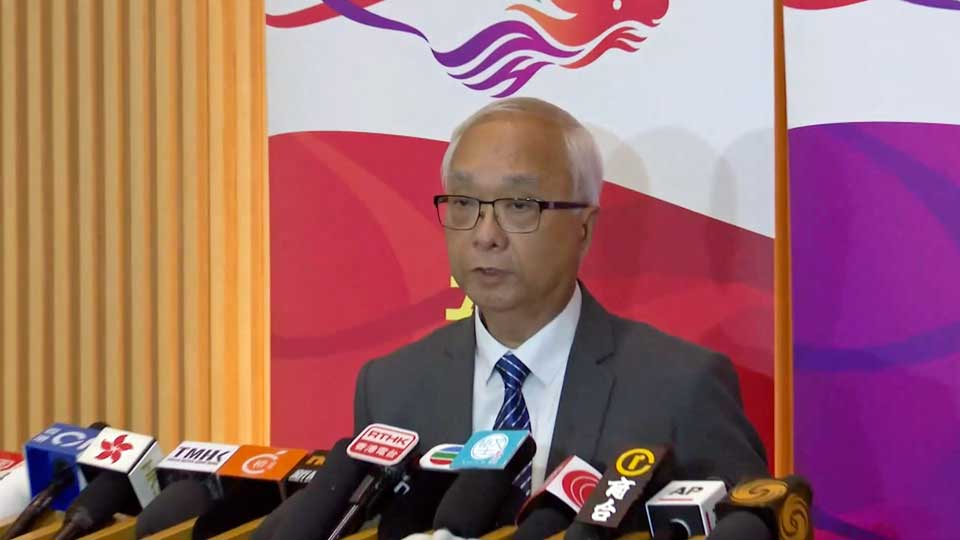
In South Korea, Park Ku-yeon, a senior official for Government Policy Coordination, said that while Seoul has no scientific or technical issue with the water release plan, his government does not support it.
He said South Korea will demand that Japan halt the release if it is not carried out according to the plan.
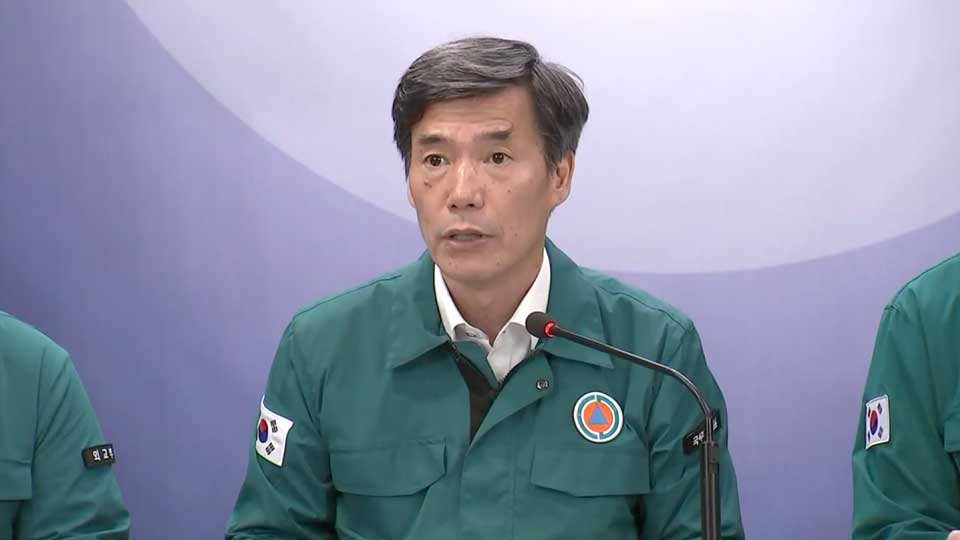
Japanese government measures
The government has said the release is necessary to decommission the plant, which suffered a triple meltdown in the wake of the March 2011 earthquake and tsunami.
Since then, rain and groundwater have mixed with the water used to cool molten fuel at the plant. The water is treated to remove most radioactive material, but still contains tritium.
The government plans to dilute the treated water to reduce tritium levels to about one-seventh of the World Health Organization's guidelines for drinking water before releasing it into the sea.
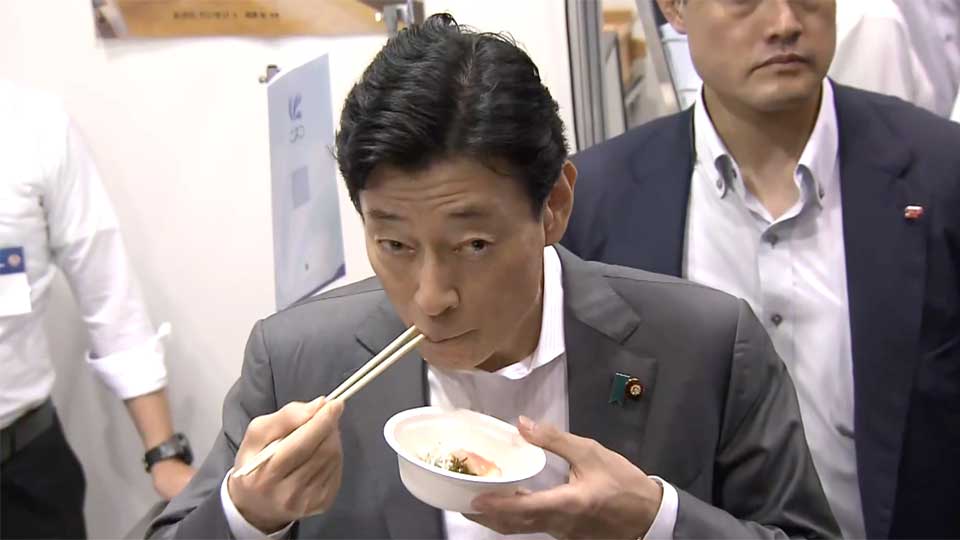
Japan's industry minister Nishimura attended an event in Tokyo that brought together marine products from across the country on Wednesday. He tasted seafood bowls made from items from the Tohoku region and called for an increase in consumption.
Japan also plans to set up a fund of 80 billion yen, or about 550 million dollars, to support the local fishing industry, whose officials fear reputational damage from the upcoming release.
The environment ministry plans to collect seawater at a total of 11 locations off the coast of Fukushima and analyze the concentration of tritium and other substances in the sea.
Seawater will be collected by ship a few hours after the first water release, and the results of the analysis will be made public several days later.
